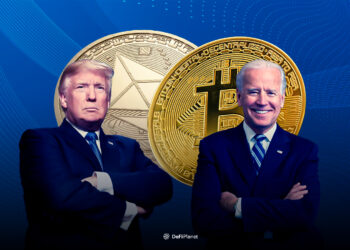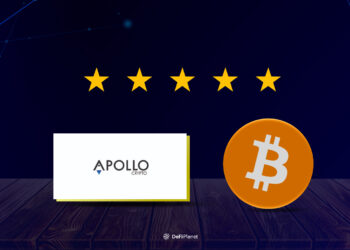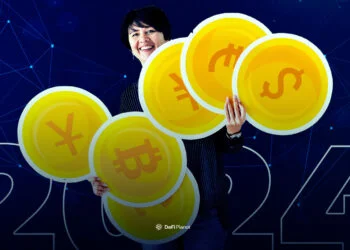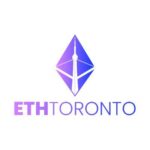Last updated on February 2nd, 2024 at 02:34 pm
When considering investing in a cryptocurrency, it’s essential to evaluate its value, profitability, and sustainability. To achieve this, it’s important to grasp the tokenomics of the blockchain or crypto project you’re interested in.
Tokenomics plays a crucial role in determining the long-term value of a cryptocurrency or crypto asset. This is why it’s vital for crypto investors to have a clear understanding of a project’s tokenomics, and project founders should design a token economy that attracts and sustains investor interest.
Projects with well-thought-out utilities, reasonable supply, and careful issuance patterns are more likely to experience growth in value and gain widespread adoption. Conversely, projects with poor tokenomics are unlikely to attract many investors and may not endure.
In this article, we explain the concept of tokenomics, emphasizing its importance and key features, and offer insights into researching and analyzing tokenomics before making investment decisions.
Understanding Tokenomics
Tokenomics is a portmanteau word; it combines “token” and “economics” to describe the economic structure and operational mechanisms of tokens of a crypto project. A project’s tokenomics includes the token’s purpose, goals, distribution methods and many other important information; it is in essence a ‘business plan’.
The success or failure of a cryptocurrency project depends heavily on how well its tokenomics is structured. A well-structured model can draw in investors and promote a robust and long-lasting ecosystem for the token. On the other hand, a badly designed model can scare away investors and possibly cause the project to fail.
A project’s tokenomics aims to establish a fair system benefiting all participants, including investors, users, founders, and developers. Therefore, developers and project founders often meticulously plan and structure all elements of tokenomics before launching a crypto coin or token.
Core Aspects of a Crypto Project’s Tokenomics
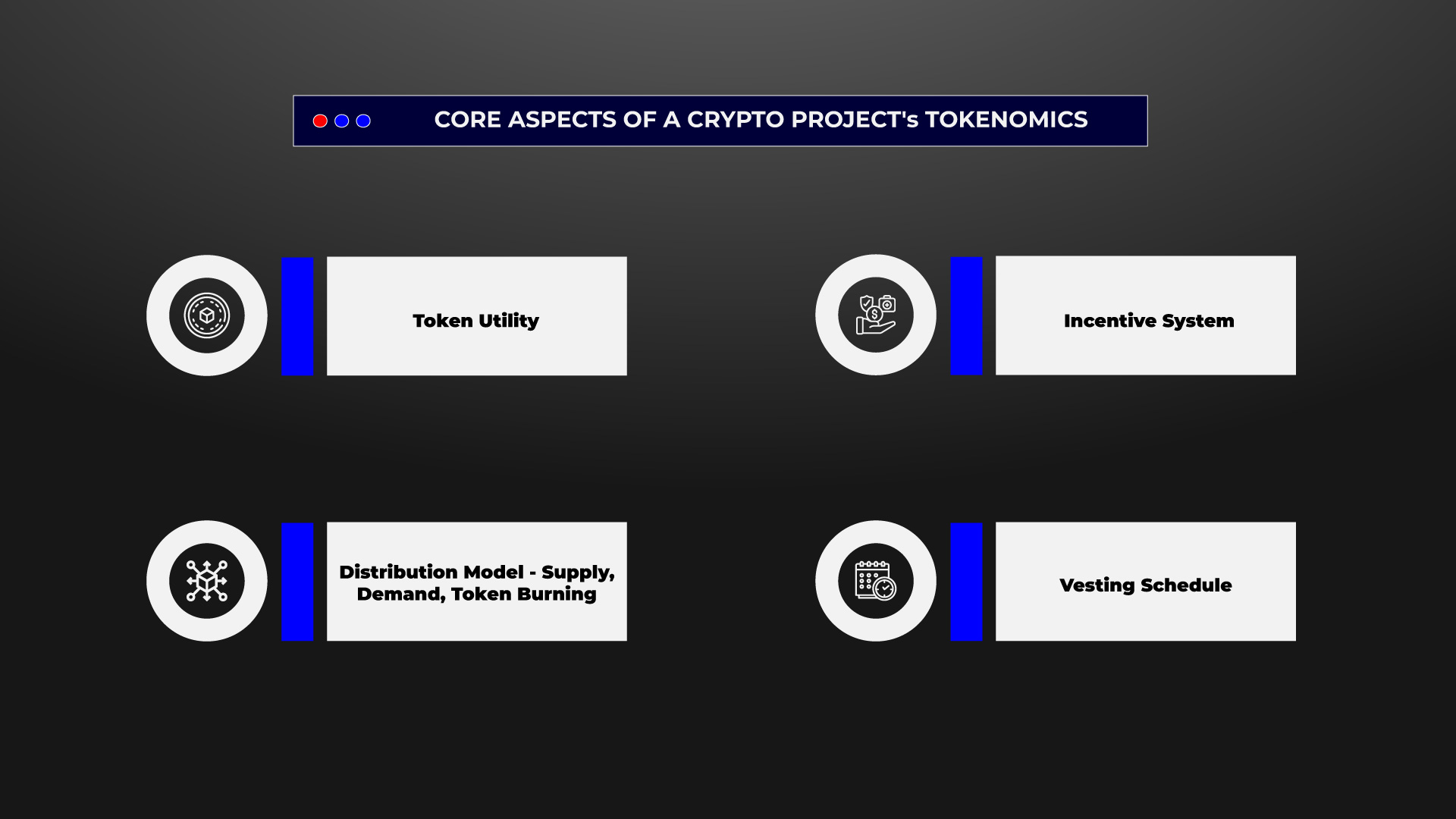
Understanding the vital aspects of tokenomics is essential for participants in the crypto space to assess models that can ensure the longevity of their projects. Some of the key features of crypto tokenomics include the following:
Utility
Utility refers to the purpose of a token within and outside of its ecosystem. The fundamental value of a token is determined by its utility. Does it serve a specific function, or is it just used for storing value?
For investors, tokens with clear and valuable utility hold promise. Typically, tokens are created for governance or service payment purposes. Some tokens provide voting rights for project decisions, while others are used to pay for services within the network. For instance, Bitcoin was designed to facilitate seamless money transfers, while Ethereum’s ETH gets its value from the value derived from multiple smart contracts and dApps operating on the network.
Distribution Model
A token’s distribution model itemizes how a token will be divided among different groups like developers, investors, the community, and reserve funds. Every currency, whether fiat or digital, operates under the law of supply and demand—and different economic systems influence the supply and demand of a cryptocurrency token. For instance, an inflationary model might introduce new tokens at a consistent rate, impacting the value of existing tokens. On the other hand, a deflationary model may reduce the token supply over time through methods like burning or staking, increasing each token’s value.
Every distribution model has pros and cons, and it’s vital to consider these when assessing different crypto projects. There are two critical aspects of a token’s distribution model you must carefully consider in addition to its demand (which is mostly determined by its utility): supply and burning.
Token Supply
According to fundamental economics, a high supply level will inevitably have a negative impact on an item’s price and, in this case, the price of a token. Thus, a token supply must be carefully designed to prevent market saturation and a subsequent decline in value.
There are three main types of supply in crypto tokenomics: total supply, circulating supply, and maximum supply. Circulating supply is the number of tokens currently in use, while total supply includes all tokens ever created or burned. Maximum supply is the most tokens that can ever exist. Some tokens have a fixed maximum supply, like 21 million for Bitcoin, while others don’t. Ether (ETH) does not have a maximum supply amount built into its architecture.
In good tokenomics, the circulating supply should grow gradually over time, but tokens should be released strategically to maintain their long-term value.
Token Burning
Token burning is the act of taking tokens out of circulation by sending them to an address that can’t be accessed. This reduces the total supply of tokens, which can boost the token’s value.
For instance, a crypto project may choose to burn tokens to make them scarcer and possibly increase demand for the rest. Many projects use this approach to create a more stable token economy.
By incorporating this feature into their tokenomics, projects limit the supply of their tokens, increasing their scarcity and likely increasing their market value.
Incentive System
A well-designed tokenomics structure accounts for the fact that most investors seek incentives before engaging in a crypto project and clearly define reward systems to increase community participation. The incentives provided must be sufficient to keep them involved in the project for an extended period and yet keep the economy of the project stable.
In most crypto projects, for example, validators and miners are rewarded with new tokens and transaction fees for verifying transactions and creating new blocks.
Vesting Schedule
For a cryptocurrency project that chooses to allocate a portion of its tokens to its development team, advisory team, and so on, a vesting schedule is an important part of its tokenomics. The vesting schedule outlines a timeline of how this allocation would occur.
The vesting schedule is primarily designed to prevent tokens from being accessed all at once, resulting in the tokens flooding the market. It usually reveals how long the tokens will be locked and what percentage can be accessed after a certain period.
Why A Crypto Project’s Tokenomics Important Crucial to its Success
A robust tokenomics model is integral to a crypto project’s success because it impacts all aspects of its operation, from user engagement to market integrity and investor confidence. The following are some of the benefits a tokenomics structure offers:
- Operational Transparency
A project’s tokenomics serves as a clear guide for potential investors, providing a comprehensive understanding of how a cryptocurrency functions and expands. It ensures the token supply aligns with user demand, maintaining a balanced economic ecosystem.
- Encouraging User Participation
A well-structured tokenomics can motivate users to actively contribute to the project, add liquidity, and promote adoption. It aligns incentives between project stakeholders, including developers, investors, and users.
Projects with meaningful and diverse use cases for their tokens are more likely to attract and retain an engaged user base. Thus, a well-designed tokenomics ensures that each participant is motivated to contribute positively to the ecosystem. This active participation contributes to the gradual increase in the token’s value over time.
- Economic Sustainability
Tokenomics establishes a framework for the economic sustainability of a crypto project. Because it defines a structure for the supply and demand dynamics, the project developers can shape the token’s value, preventing market manipulation and excessive price fluctuations by managing these dynamics. This helps prevent inflationary pressures or scarcity issues, contributing to the project’s long-term viability.
- Preventing Concentration of Power
Tokenomics ensures fair token distribution, preventing the concentration of power and wealth among large holders (whales). Governance mechanisms, like voting systems, empower token holders to influence the project’s direction and protect their interests.
- Boosting Investor Confidence
Understanding the token distribution, the project’s funding model, and the utility of tokens enables investors to make informed decisions. Thus, transparent and well-communicated tokenomics instil confidence in investors.
How to Research Tokenomics for Better Investment Decisions
We have established that for investors looking to make intelligent choices, it’s crucial to dig into the details of a crypto project, especially its tokenomics. So, how can one go about it?
The starting point is to review the project’s whitepapers. Many crypto projects provide details about their tokenomics in a whitepaper. This shouldn’t be a quick read; you should take the time to carefully read and examine the whitepaper to fully understand the token’s philosophy, technology, and the mechanics behind its supply and demand.
While you review a project’s whitepaper, be sure to identify the specific aspects of the project tokenomics that we have listed above. If you do, this means you would
- Evaluate the token’s utility. To understand a token’s utility, you must determine its role and function within the ecosystem. Is it mainly for speculative trading, or does it have a specific purpose? Investigating its practical application and demand can provide insights into its actual value. For example, if a token is essential for accessing a widely used decentralized application, it likely has real-world utility. Combining this evaluation with an analysis of the demand for the service it enables can serve as a strong foundation for investment decisions.
- Review the project’s economic models. As discussed earlier, various projects may adopt different economic models, including elements like inflation, deflation, or a mix of both. Understanding these models helps predict how the token’s value may evolve.
The next thing to do is to assess the project’s community activities. A project’s community engagement is a crucial indicator of what the project holds. An active and involved community typically supports and believes in the project’s goals. You can check online forums and social media groups or even attend real-world gatherings to gauge the community’s vibe. Participate in discussions or observe them to gain insights into the project’s reputation and any issues people may have about it.
Finally, evaluate the project’s regulatory compliance. This may feel totally out of place here, but it is necessary. If a project complies with local and international regulations, it has a higher chance of survival than those that do not. A regulatory-compliant project would minimize its chances of potential damage and legal risks and enhance its credibility.
It’s important to keep in mind that external market factors like changes in demand, competition, and regulations can influence a project’s tokenomics. For instance, if a government prohibits crypto trading, it can significantly impact a token’s value and demand. On the other hand, if a large company announces that it accepts a particular token for payments, it can boost the token’s value and demand. It’s important to consider these market factors when evaluating tokenomics models for crypto projects.
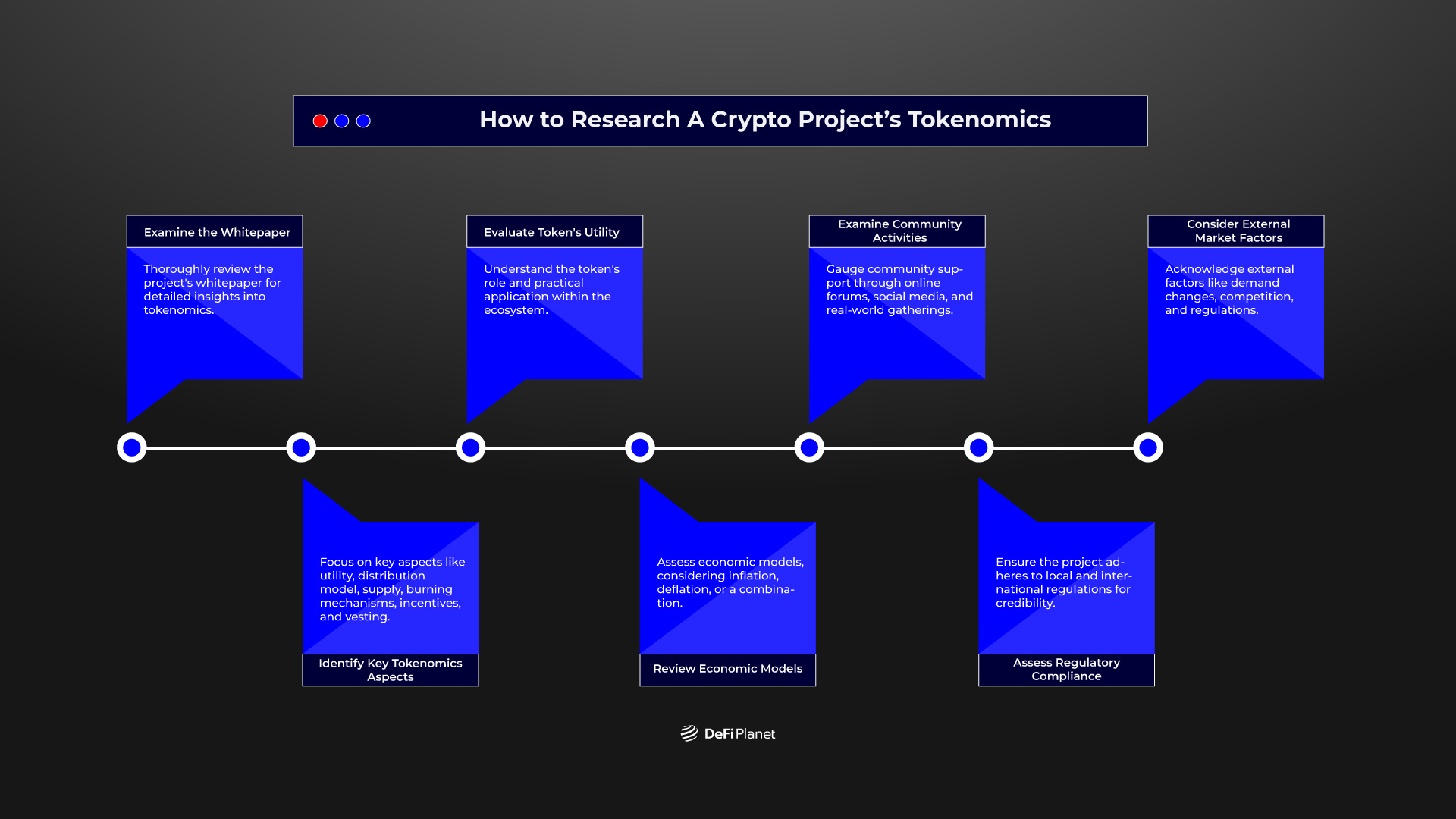
In Conclusion,
A crypto project’s tokenomics holds paramount importance for both developers and investors. Developers are responsible for crafting robust tokenomics, providing essential information for investors to gauge the project’s worthiness for investment.
Finally, though decentralization is esteemed in crypto, it alone doesn’t guarantee project improvement. The true determinants of success and what truly matters are transparency, integrity, efficient processes, and a capable team—whether comprising core developers or elected community members. Interestingly, well-designed tokenomics is a good place to start.
Disclaimer: This article is intended solely for informational purposes and should not be considered trading or investment advice. Nothing herein should be construed as financial, legal, or tax advice. Trading or investing in cryptocurrencies carries a considerable risk of financial loss. Always conduct due diligence.
If you would like to read more articles (news reports, market analyses) like this, visit DeFi Planet and follow us on Twitter, LinkedIn, Facebook, Instagram, and CoinMarketCap Community.
“Take control of your crypto portfolio with MARKETS PRO, DeFi Planet’s suite of analytics tools.”




